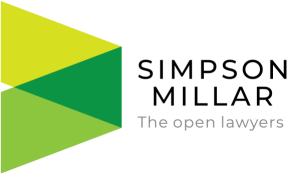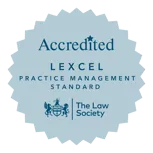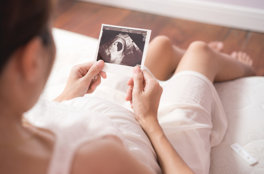A Medical Negligence Claim Case Study - Client Situation
The child was diagnosed with severe four limb dyskinetic cerebral palsy with a mild spastic diplegia, which means that he will be economically and physically dependent upon others for the rest of his life. There are different types of Cerebral Palsy however generally the term refers to a set of lifelong neurological conditions that affect a child’s movement and coordination. It is caused by damage to the brain that takes place and develops either before birth, during the delivery or shortly after birth.
Injury to the brain may occur due to a range of different reasons including:
- A limited or an interrupted oxygen supply to the baby’s brain
- A bleed within the baby’s brain
- A premature or difficult birth process
- An infection in either the baby or the mother when pregnant
- Changes in the baby’s genes which affect the development of the baby’s brain
- Meningitis
Unfortunately, in some cases it is not always clear what the exact causes of Cerebral Palsy are.
It is estimated that 1 in 400 babies born in the UK have a type of cerebral palsy with the Office for National Statistics indicating that with a birth rate in England and Wales of around 700,000 per year, there may be as many as 1,700 new cases of cerebral palsy in babies and children each year.
What are the Symptoms of Cerebral Palsy?
The symptoms of Cerebral Palsy are not usually obvious just after a baby is born but they do normally become noticeable from an early age. Symptoms which indicate that your child may have Cerebral Palsy include:
- Delays in reaching development milestones
- Seeming too stiff or too floppy
- Weak arms or weak legs
- Fidgety, jerky or clumsy movements
- Random or uncontrolled movements
- Walking on their tiptoes
- Issues swallowing or speaking
- Vision problems
- Learning disabilities
What Are the Different Types of Cerebral Palsy?
There are different levels of severity which means the symptoms of Cerebral Palsy can vary significantly from child to child. In some cases, a child may display fairly minor symptoms, have problems walking or have impaired motor skills but in other cases, a child may be profoundly disabled and require lifelong care.
The NHS describes three different categories of Cerebral Palsy:
It is possible to have a combination of these categories which is referred to as Mixed Cerebral Palsy. Spastic Cerebral Palsy affects muscle stiffness or weakness which is caused by damage to the motor cortex of the brain whereas Athetoid Cerebral Palsy affects the muscle tone which causes involuntary spasms and is caused by damage to specific parts of the brain, namely the basal ganglia and the cerebellum.
Ataxic Cerebral Palsy affects balance and coordination which is caused by damage to the brain’s motor control centres during development.
What Treatments Are Available?
Unfortunately there is currently no cure for Cerebral Palsy however treatments are available to help people with Cerebral Palsy be as active and independent as possible. Treatments can include:
- Physiotherapy – this encompasses techniques such as exercise and stretching to help maintain physical ability and hopefully improve movement issues
- Speech therapy – this may help with speech and communication issues in addition to swallowing difficulties
- Occupational therapy – for this treatment, a therapist will identify problems that you or your child have in carrying out ordinary everyday tasks and assess this in order to suggest ways or aids which could make these easier for you and your child
- Medication – this can be prescribed for muscles stiffness and some other difficulties, depending on the nature of these
- Surgery – in some cases, surgery can be recommended to treat movement or growth problem, however it should be noted that this would not cure Cerebral Palsy and would be focused on improving the quality of life for you and your child
How We Helped
While Cerebral Palsy is rarely life threatening, the impact of the condition on a child and their family can be huge. The condition can affect the quality of life of the child and their family, in addition to putting them under significant long term financial pressure.
In this case, the baby’s mother contacted our Medical Negligence Solicitors to make a claim for compensation.
The compensation obtained following a successful medical negligence claim can cover the cost of care and support that your child may need, such as physiotherapy, technology, medication and any home adaptations that need to be made. Our team of experts will instruct experts to assess the needs of your child and the difficulties you, your child and your family may face in order to recommend aids and/or treatment(s)
In addition to this, compensation will reflect any loss of earnings suffered by the family as a direct result of having to be absent of work due to care requirements or attending hospital appointments, for example.
One of our expert Clinical and Medical Negligence Lawyers assessed this case and determined that we could accept instructions to investigate liability. Due to this, we secured Legal Aid for her and approached the NHS Hospital Trust which was responsible.
In a Letter of Claim to the Hospital Trust, it was alleged that the obstetric team handling the birth had failed to:
- Identify abnormal CTG traces in a timely manner
- Perform an emergency caesarean section as soon as the CTG mandated action
These failings were cited as the cause of the resulting Cerebral Palsy and related physical and mental disabilities. However, the Hospital Trust denied liability, arguing that the CTG trace didn’t necessitate an emergency caesarean delivery.
Both parties in this birth injury case consulted with independent medical experts on the matter, which led to a major difference of opinion over the interpretation of the CTG trace.
The Outcome
Given that liability was denied, we commenced Court proceedings by issuing a Claim Form. Once this had done and the Court proceedings were underway, a Joint Settlement Meeting (JSM) was arranged with a view of avoiding a fully contested hearing. At this point, the Trust accepted that we had gathered compelling evidence demonstrating medical mistakes were made before, during and after the child’s birth.
The Hospital Trust originally offered to settle for £500,000.00 and subsequently, £2.5 million. Our Clinical Negligence Solicitor, told them that both offers of compensation were too low. It became clear that the Trust wanted to avoid a lengthy legal process, and as a result, a compensation settlement of £3.65 million plus legal costs was agreed.
Since the child lacked the mental capacity (to make informed decisions for himself) he was deemed a Protected Party and the settlement had to be approved by the Court, to ensure it was in his best interests.
We accepted instructions for and brought the claim to a successful conclusion after it was rejected by another national law firm on the grounds that there wasn’t enough supporting expert evidence. However, we were happy to represent the child’s interests and were able to construct a compelling case after instructing our own tried and trusted medical experts.
Our team of qualified Medical Negligence Solicitors will undertake all the necessary investigations for you, have day to day conduct of your claim from start to finish and arrange appointments with all of the appropriate medical experts. This means that you don’t have to be concerned. Our team will regularly provide you with support and clear, straightforward information and advice throughout the whole medical negligence claims process to reassure you and guide you every step of the way.
If you are looking for a no obligation chat about a possible medical negligence claim arising from a birth injury which caused Cerebral Palsy, our friendly and dedicated team is ready and waiting to take your call on 0808 239 6043. Alternatively, you can request a call back and one of our team will contact you as soon as possible.









